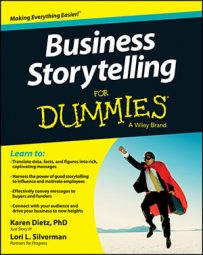What we stand for stories are about core values of a business and the work ethics that surround them. These stories relay non-negotiable principles that guide how you or the organization choose to lead your life and/or conduct business.
Stories about what you stand for
Stories about what you personally stand for communicate what you value and prize the most. These stories may come from experiences in your personal life or within a work setting unrelated to where you’re employed today.
Consider this story from Jean Peelen that she shared at a 2003 session on Core Value Storytelling at the Smithsonian Associates Program. This story was sparked in an activity in which trios of attendees were asked to tell a story to each other that connected them to what is most essential to their being.
I was in a coaching group with about 15 people and we were coaching each other. One person in the group was named Kathy and she was about 45 years old, an African-American. She was financially in dire straits. She had essentially no money.
In the middle of the group, or in the time allowed for the group, Kathy developed liver cancer. She had a very, very bad prognosis.
I wasn’t Kathy’s coach. A friend was Kathy’s coach. After her surgery and in the middle of chemotherapy and Kathy was clearly wasting away, her body was wasting away, she told her coach that she had decided to become an actress. Not just an actress but an Academy-award winning actress.
I don’t know what I would have said, if I had been Kathy’s coach at that time. I’m grateful that I was not.
What my friend — her coach — said was: “Great! What a great idea! Go for it!” So Kathy started taking acting classes. Kathy died two months later on the way to her dream. The symbol that I drew for this story was an Academy Award, which Kathy won. My core value lesson from this story is that I will never, ever, ever close down possibility for another human being.
We all have situations in our lives that help us define what we stand for at the core of our being. Here are a few ways to identify your stories:
Tell me about a situation that caused you to realize you hold strongly to a specific value in life.
Paint for me a picture of a time in your life where you were very clear about what’s essential to your ethical well-being.
Enlighten me about a time when a principle you hold became non-negotiable for you.
You too can relay these experiences in the workplace. As before, you may be asked to convey them in interviews for a new job or assignment and/or once you join a team or project. These stories are also invaluable when coaching and mentoring others and when providing performance feedback.
“What the organization stands for” stories
Here’s what a lot of organizations do. They list single words or a set of phrases as their values, such as these:
We empower each other to do the right thing.
Service before self.
We do what we say we’re going to do when we say we’re going to do it.
The customer comes first.
We strive to be kind and caring in our interactions with each other.
Then they define each one by a sentence or a paragraph description. In a blog article or newsletter, they might even recognize people who demonstrate these behaviors: “Susan stayed late three nights to get a critical project out the door for our client. Not only did she stay late, she went above and beyond what the client originally asked for, which was rewarded by our getting another piece of business.”
This is a description, not a story. As such, it doesn’t suffice to change behavior.
What’s needed are stories — stories that depict how the values are embodied in your workplace. Not stories to say that your organization has values. What’s most important to convey is what’s done to actualize these values.
Customers and clients also want to hear this type of story. Sixty-four percent of more than 7,000 consumers stated that “shared values build relationships” in a study by Karen Freeman, Patrick Spenner, and Anna Bird. According to the study: “A shared value is a belief that both the company and the consumer have about a brand’s higher purpose or a broad philosophy.”
This is why TOMS Shoes is so successful and popular. Consumers are drawn to the stories of how the business is operated and how kids benefit because the company lives its values by giving away shoes and restoring eyesight through the Seva Foundation.
Here are some ways to flesh out stories about what the organization stands for and how people in your organization embody these espoused values:
If you’re an entrepreneur wanting to distill what your firm stands for: Identify up to ten values that are critically important to how you want to run your firm. Then systematically collect stories of how your organization embodies them.
If you have feedback from customers, members, patients, clients, and so on: Pull out situations that appear to exemplify the values that these individuals feel are important in how your organization interfaces with them. Craft stories around these experiences.
If your organization has been around for several years: Ask long-tenured employees: “Tell me about a time when the business operated in such a way that what’s highly prized came to the surface.”
Or, “Tell me about a time when qualities we most prize came through in our interactions with customers.” Or, “Tell me about a time when what we most prize about our business products or services was clearly demonstrated.”

